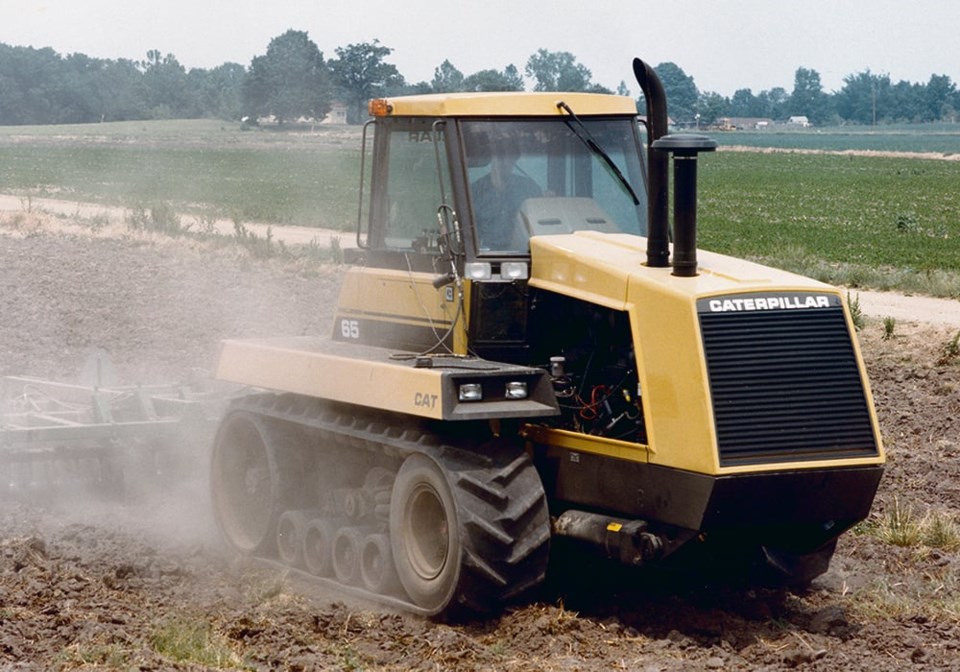WESTERN PRODUCER — In early 2002, Caterpillar sold the Challenger belted tractor line it had developed to Agco, just 16 years after it introduced it to the market.
However, some Caterpillar dealers in Canada continued to sell the Challenger, and because of the Cat-built drive train, the tractors continued to carry a Cat decal on their sides for a while after the sale.
All of that caused some confusion among farmers, many of whom continued to believe for years that Cat still owned the line.
The confusion wasn’t limited to producers.
“I was interviewed one time by Maria Bartiromo on her television show,” former Cat chief executive officer Glen Barton said in an interview about 15 years ago.
“And she started off by asking the question, ‘what’s your outlook for the ag business for next year’. And my immediate response was, ‘we’re not in the ag business.’ She was taken aback. She couldn’t believe we were not in the ag business. She didn’t know what to ask next. It turned out to be a shorter interview than what she had planned on.”
Barton, who died in 2016, spent 43 years at Caterpillar and was CEO for five years before retiring in 2004.
When asked after he retired why he decided to sell the Challenger tractor line to Agco, he said a prime consideration was the soft market for construction equipment due to a downturn in the economy, which had significantly lowered profits at Cat.
“It was very clear to the upper management of the company that we had a clash of priorities at a time when the economy was soft,” he said.
“We were underfunding our cash cows, so to speak, at the same time as we were investing heavily in agricultural development. When we looked at what kind of additional capital investment we had to make, we were talking well in excess of $100 million. Much of that was addressing the distribution side. This was at a time when were struggling to make a bottom-line profit.”
Although engineers at Cat continued working on refining the Challenger design, the company found that its dealer network really wasn’t set up to market to farmers.
“In the Challenger case, we probably had 15 or 20 dealers out of 75 to 80 at that point in time that had a really good opportunity for the product,” he said.
“We recognized we would have to compete from a zero ground standpoint to take away market share from the market leaders. They (other ag brands) had their own unique distribution that at that time was very decentralized, with many dealerships in small towns close to farmers.
“I think that, in itself, gave farmers a reluctance to buy from someone who was not locally represented, someone who was maybe 30 miles away from where their farm was as opposed to someone who was five or 10 miles.
“I would say that the reason we ended up getting out of the business was that we did not have the distribution system in place that could ensure us the kind of market share we were accustomed to getting with other products, and we did not have the marketing strength our dealers had with other products that would allow us to win in a tough battle against market leaders John Deere and Case IH.”
Despite those factors, Barton said it was a tough call to make, but there was no escaping the fact the Challenger just didn’t fit with most of Cat’s dealership network.
“Our issue was a distribution issue at the end of the day, and in frankness, that’s what Agco was able to do,” Barton said.
“They had small dealers here and there. They could sell one brand of tractor in one area and another brand in another area. They just knew how to work the farm distribution system better than we did.”




